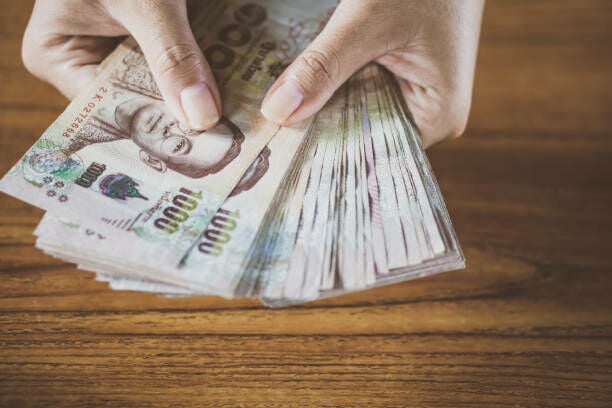Weakening Thai baht forecast due to economic cost factors

Analysts predict a decline in the value of the Thai baht, the nation’s currency, attributed to various factors such as sluggish economic growth, elevated freight expenses, and discord regarding reductions in interest rates. It is anticipated that the baht will fluctuate within the range of 36 to 36.50 against the US dollar throughout this month.
On Wednesday, the baht recorded a decline, falling below 36 to the US dollar, and was quoted at 35.96-98 to the US dollar yesterday morning. This was in response to a slight easing of the dollar, following a minor reduction in US economic growth than initially projected at 3.3% for the last quarter of 2023, as reported by the Kasikorn Research Center, reported Bangkok Post.
However, the US economy demonstrated resilience, achieving a 2.5% growth in 2023, surpassing the 1.9% increase in 2022. The driving force behind this growth was consumer expenditure, which constitutes approximately 70% of US economic activity, and recorded a 3% annual increase in the final quarter of the year.
Patrick Poulier, the executive vice president and chief of the financial markets function at Siam Commercial Bank, opined that Thailand’s economic recovery this year would continue to be hindered by structural issues. This follows a GDP growth in the last quarter of 2023 that fell below the anticipated 1.7%, largely due to a slow resurgence of tourism expenditure, and languid public investment and consumption, said Poulier.
“In the short term, the baht is tending to depreciate as the dollar gains in line with treasury yields, which are expected to remain high in the near term.”
Poulier anticipates the baht’s depreciation against the dollar, estimating a range of 36-36.50 baht in March.
Bank of America (BofA) Global Research has observed a recent consolidation of the baht as equity outflows stabilised before transitioning to small net inflows in February. However, the currency continues to respond negatively to any potential rate cuts or dovish tilts by the Bank of Thailand.
Government discord
Analysts Adarsh Sinha and Claudio Piron, co-heads of Asia FX and rates strategy at BofA, noted in a recent research report that the discord between the government and the central bank continues to affect market confidence. This, coupled with weak exports and growth data, further weakens Thai baht.
The same research report highlighted the baht’s vulnerability to increased freight costs, which are reportedly the highest in the region, the report said.
“The baht is exposed to rising freight costs, as this could add to import bills.”
By the end of the first quarter, BofA anticipates the baht to trade at 36 to the US dollar.
However, the report suggests an improvement in the currency’s fundamental factors over the year, as the current account surplus expands and rate differentials shrink, offering more cushion against capital flows.
“That would likely result in lower baht volatility in the second half of the year and appreciation from current levels,” the research concluded.
Latest Thailand News
Follow The Thaiger on Google News:


























